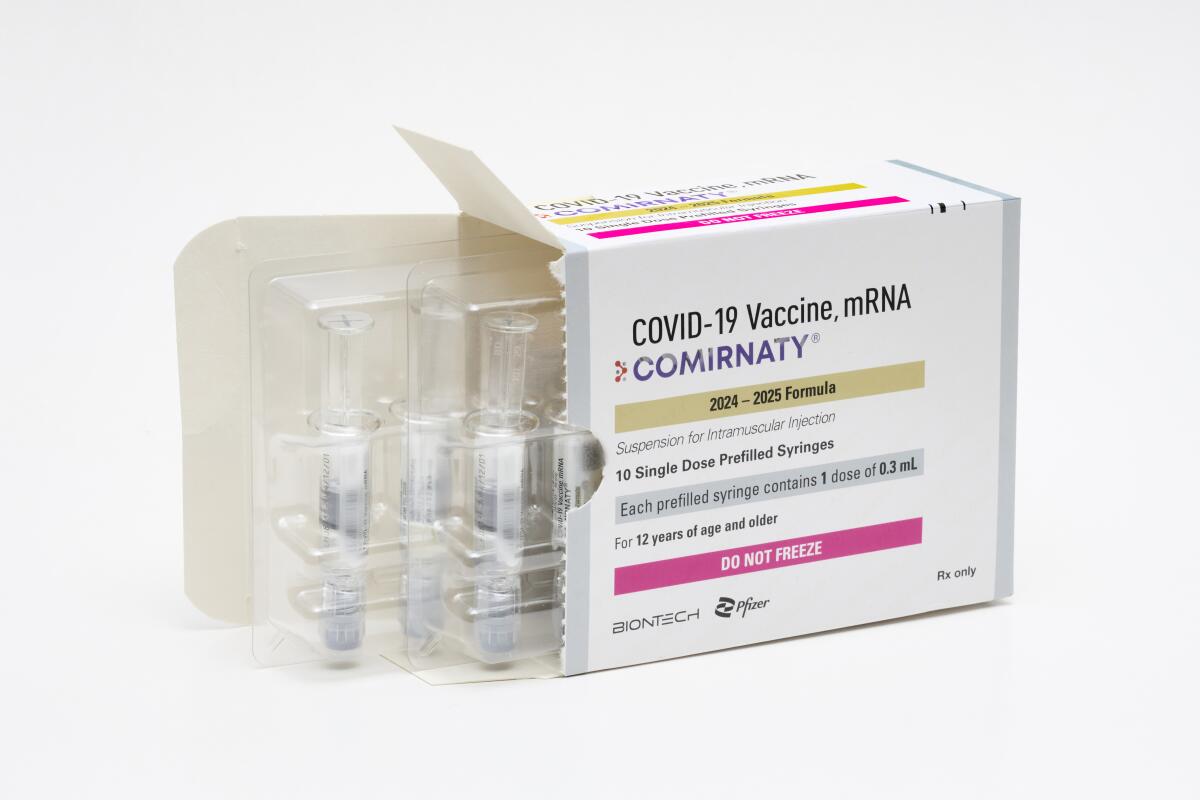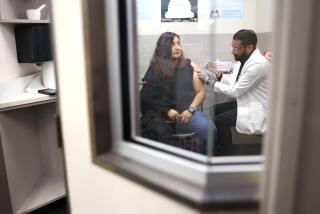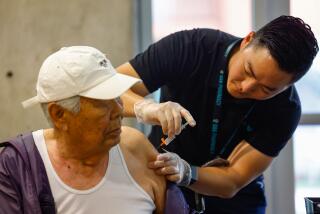FDA approves updated COVID-19 vaccines; shots should be available in days

- Share via
WASHINGTON — U.S. regulators approved updated COVID-19 vaccines on Thursday, shots designed to more closely target recent virus strains — and hopefully whatever variants cause trouble this winter too.
With the Food and Drug Administration’s clearance, Pfizer and Moderna are set to begin shipping millions of doses. A third U.S. manufacturer, Novavax, expects its updated vaccine version to be available a little later.
“We strongly encourage those who are eligible to consider receiving an updated COVID-19 vaccine to provide better protection against currently circulating variants,” said FDA vaccine chief Dr. Peter Marks.
The agency’s decision came a bit earlier than last year’s rollout of updated COVID-19 vaccines, as a summer wave of the virus continues in most of the country. The U.S.Centers for Disease Control and Prevention already has recommended this fall’s shot for everyone age 6 months and older. Vaccinations could be available within days.
Although most Americans have some degree of immunity from prior infections or vaccinations or both, that protection wanes. Last fall’s shots targeted a different part of the coronavirus family tree, a strain that’s no longer circulating — and CDC data show only about 22.5% of adults and 14% of children received it.
Skipping the new shot is “a hazardous way to go,” because even if your last infection was mild, your next might be worse or leave you with symptoms of long COVID, said Dr. Robert Hopkins Jr. of the National Foundation for Infectious Diseases.
This fall’s vaccine recipe is tailored to a newer branch of Omicron descendants. The Pfizer and Moderna shots target a subtype called KP.2 that was common earlier this year.
Although additional offshoots, particularly KP.3.1.1, now are spreading, they’re closely enough related that the vaccines promise cross-protection. A Pfizer spokesman said the company submitted data to the FDA showing its updated vaccine “generates a substantially improved response” against multiple virus subtypes compared with last fall’s vaccine.
The big question: How soon to get vaccinated? This summer’s wave of COVID-19 isn’t over, but the inevitable winter surges tend to be worse. And although COVID-19 vaccines do a good job preventing severe disease, hospitalization and death, protection against mild infection lasts only a few months.
People who are at high risk from the virus shouldn’t wait but instead schedule vaccinations once shots are available in their area, Hopkins advised.
That includes older adults, people with weak immune systems or other serious medical problems, nursing home residents and pregnant women.
Healthy younger adults and children “can get vaccinated anytime. I don’t think there’s a real reason to wait,” Hopkins said — although it’s OK to seek the shots in the fall, when plenty of doses will have arrived at pharmacies and doctor’s offices.
The exception: The CDC says anyone who recently had COVID-19 can wait three months after they recover before getting vaccinated, until immunity from that infection begins to wane.
Hopkins, who sees patients at the University of Arkansas for Medical Sciences, calls it vital for more youngsters to get vaccinated this year — especially with schools starting as coronavirus levels are high around the country.
“COVID does not kill many children, thank goodness, but it kills far more children than influenza does,” Hopkins said, adding that teachers, too, should quickly get up to date with the vaccine.
Neergaard writes for the Associated Press.






